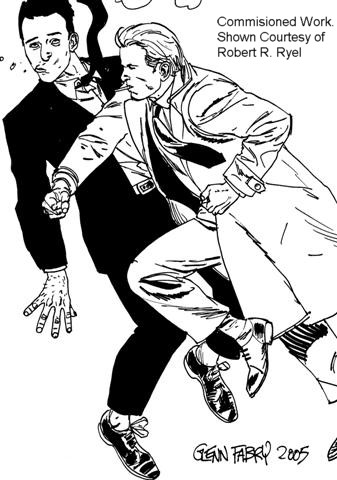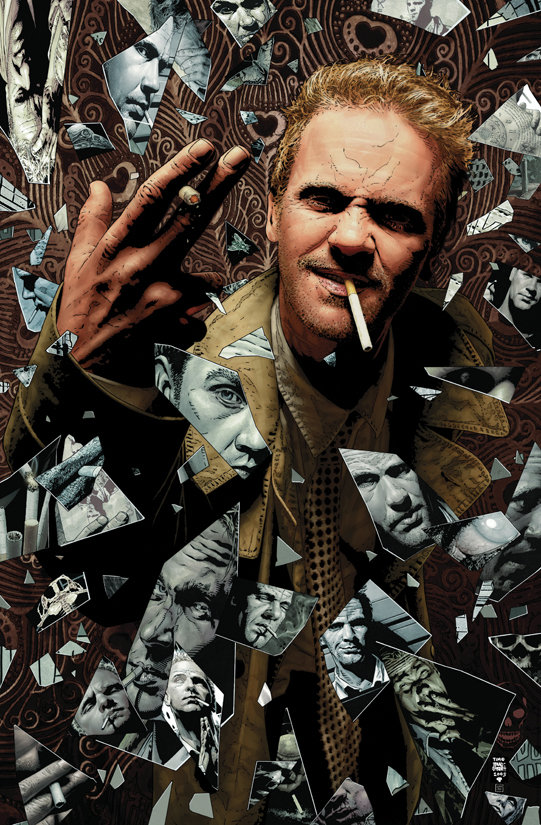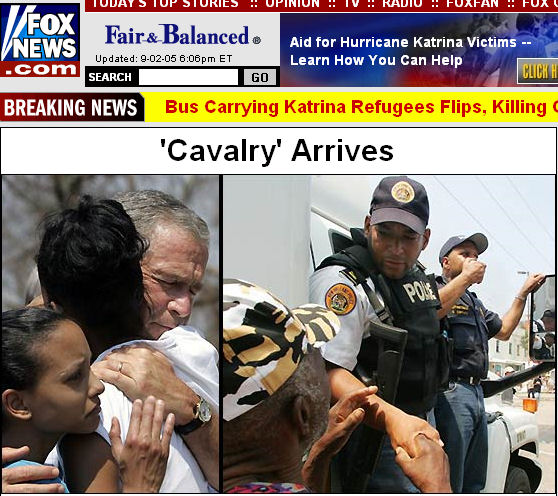-
Posts
2,222 -
Joined
-
Last visited
-
Days Won
21
Content Type
Profiles
Forums
Events
Posts posted by Demon Chas08
-
-
They should totally get Peter Stormare to play Aisha.
NNNNOOOOOOOO!! :icon_mgun:
-
Seven years in review. Love it.
-
One of the joys of having a high-profile Hellblazer website is the occasional fan will drop me a note with something interesting attached. Like this:

Yeah!!!!!! We're not alone!!!!
-
For me it's Jenkins.plus I have a coat just like Sean Phillips' John.
-
*nails his head to the floor*
-
I wonder if my name's on it.
Yer there alright. To the upper left of Pooka and Balth - On the right side wall.
"DC 08"
- TB '05
Sweet!
-
I wonder if my name's on it.
-
This cover kicks ass all the way!!!
-
Hey guys just an update
I've switched my MA course at ysj to a the more appropriate surroundings of Newcastle University [ahem a Masters from an old Polytechnic wasnt taken very seriously by Establishment universities]
Therefore switching from my chaos theory Dissertation ive decided to tackle hellblazer this year during this for this MA
http://www.ncl.ac.uk/postgraduate/taught/s...tics/courses/18
I'm really glad i got accepted they just got a 4million quid cultural lab [Whatever that is :p ]
Here are my proposal notes which are submitted to the University. A huge thanks to james [who needs to pm me his details for a ref] This now needs to be fine tuned down to 18,000 words of pure gold
Straight To Hell: A Study of the Comic-book as a Literary Form through the work of Hellblazer
This thesis will focus primarily on the ‘underground’ comic-book ‘Hellblazer’ published by ‘Vertigo Comics’ an alternative imprint of the comic-book and graphic novel publisher DC comics. It operates underneath the ‘Vertigo’ title in order to separate their titles from the mainstream, family friendly DC comics of which Superman and Batman are associated worldwide.
Hellblazer is such a title directed at a mature or adult audience, whose protagonist John Constantine, an unconcerned, somewhat amoral occultist with a British working-class background who manages trick his way through the modern world saturated with myths, magic and the supernatural by a combination of luck, trickery, and genuine magical skill. Constantine is a contemporary anti-hero, fighting for his survival by being highly manipulative; even so far as sacrificing other lives and souls to achieve his own ends. In turn these individuals haunt him frequently finding himself haunted by an ever-increasing entourage of ghostly figures.
This thesis will demonstrate that Vertigo comics are as relevant as ‘The Novel’, rather than a form of ‘underground’ literature. Fittingly Garth Ennis, a writer for Hellblazer, recently won The Guardian’s ‘Book of the Week’ in July, 2001 for a graphic novel collection of another Vertigo Title ‘Preacher’ but within the same review the comic medium was criticised for
“….the novelty, and precarious sustainability, of the form. Not many graphic novels either ask or deserve to be taken seriously; and the bande dessinée format very often itself implicitly asks that it not be judged seriously at all. The greatest practitioners of the art operate in an area between seriousness and flippancy; they don't pretend that they're writing something else, such as literature”
In the following chapters I will address such ‘literary prejudice’ towards the comic book form cannot be applied to Vertigo the titles of which it investigates comic art's varied genres from humour and adventure, to the underground and alternative whilst allowing for one to charts the rise, fall and resurrection of the literary medium. Much like the Bloomsbury Group beforehand, Vertigo introduced a plethora of new titles without any constraints as to when or where the plot happens. In 1993 the Vertigo line was created to attract writers who wanted to publish sophisticated adult texts for those who had matured with medium of the comic-book. Indeed in an era when almost all of the big names in comics were artists most publishing companies such as Image Comics pushed for the art style over the literary. Vertigo was unique in pushing writers to the forefront.
Chapter 1. Introduction
Focuses in on the medium of comic book writing as a literary form; analysis of past and present research [bibliography of research can be found on following page]. I will expand on Scott Marshall ‘Toward a Literary Treatment of Comic Books’ by drawing upon the ‘evolution’ of the comic book from Pop Art to Vertigo’s conversation of the medium as a valid literary form. Then I will focus writers with literary acclaim who have wrote for Hellblazer such as Gaiman, Morrison and Ennis to draw parallels of Vertigo and Bloomsbury as two institutions who produced equally significant quantities of work. I also want to do further research into comparative study to see if the themes explored in HB are similar to the themes explored in other literary genres at the same time. For example Hellblazer writer Delano was writing about the Cold War before Noam Chomsky’s The Cold War & the University: Toward an Intellectual History of the Postwar Year.
Chapter 2. The Contemporary Mythology of Hellblazer
Contemporary myths are often re-creations or reinterpretations of ancient myths. Buffy the Vampire Slayer by Image comics, which recently was televised into the mainstream, can be considered a contemporary myth as it employs the same symbols as used in the Nosferatu myth. In ancient mythology it was also common for a person to employ an animal mask to take on the spirit and energy of that animal. In a contemporary myth such as the superhero story of Batman, the hero uses a mask and costume to endow himself with the power and iconic force of that animal. The well known story of Superman echoes the ancient myth of a Changeling, a non-human child who was raised by humans and grew to become their champion.
Study of contemporary mythology often includes comparisons with ancient myth, more recent folklore, and with established formal philosophy. Theories of contemporary mythology are also becoming more consciously and deliberately employed in religious practice, psychotherapy, and the analysis of popular culture. One of the more notable twentieth century theories of contemporary mythology applicable to art-literary compound of the comic book will be the idea of a collective unconscious popularized by Jung.
This chapter will focus on the contemporary mythology [or urban mysticism] employed in Hellblazer from which comparisons with ancient myth, folklore, parable and formal philosophy will be made.
Chapter 3. The Post-modern Elements of Hellblazer
Beginning with a focus on the skilful manipulation and occasional destruction of the "fourth wall", the barrier that separates the reader and the protagonist that resulting in some of the most comprehensive meta-fiction found in literature. These will then be reflected against religious practise, psychotherapy of the text as an analysis of the comics representations with ‘mainstream’ culture.
Textual Examples:
Issue #24, "Larger than Life" in which Constantine realises that he's in a fictional story
#120 in which Constantine invites the reader on a pub crawl with him
#129-133 Son of Man storyline which mixes up all kinds of genres and has John addressing the reader direct to camera
Chapter 4. The Socio-Political Elements of Hellblazer
Focusing upon Constantine’s rare position as a British comic-hero and how the character acts as a critique of contemporary society. The comic frequently alludes that the British are demonized/demoralised by an unliberated society. Through the mythological Hellblazer then reveals a deeper truth: in order that a man may be free within an unfree society, he must become unmoral or ‘monstrous’. It is this very monstrosity, that which separates and distances Constantine from society and which that enables him to escape and critique the social shackles that are forced upon him either manmade or supernatural.
But as Constantine depicts, a tortured soul is not bound to a society that values conservatism. Hellblazer as a work of fiction is therefore equally bound and freed by time and realistic characterization.
Constantine often demonstrates individualistic post-modern man can also go too far: a tortured soul whose magic/mythical expressions of his free will amount to death and destruction. Freedom through monstrosity is not limited to Constantine alone other marginalized groups and individuals can also achieve sovereignty by embracing their (often imposed) monstrous nature. This is the case for both Saladin Chamcha and the non-Anglo-Saxon youth of London in Salman Rushdie’s The Satanic Verses. Whether the monster is occultist or immigrant, natural or constructed, do these texts all argue that freedom is gained through the acceptance and celebration of one’s own monstrosity?
Textual Examples of society/authority as monstrous
(#1-2)An African hunger demon gorges on the decadent and greedy people of New York
(#3)Genuinely soulless yuppies
(#5)General anti-Vietnam war sentiment
(#5)Small, forgotten AMERICAN towns with no purpose turn to god and allow themselves to be fleeced of money in the hope of a miracle
(#6) Skinhead neo-Nazis and undercurrents of fascism in 80s society
(#13) Cheap nuclear power plants chosen despite potential threat to the public
(#25-26) A Northern town with no hope for the future since its mines were shut down self-destructs when the dark, repressed desires of its residents are brought out (it's also supposed to involve the Cabbalistic abyss which is supposed to reflect the worst parts of yourself - you can find out stuff about it on the internet)
(#27) Homeless people ignored and cast aside by society; three of them die because the Government starts hosing them down with water in the middle of winter to get them off the streets
(#36)Vision of the future as post-environmental-apocalypse hellhole
(#37-38) Male domination over women complicit with consumption of meat
Chapter 5 -Constantine as the Post-Colonial hero
‘No man who knows ought can be so stupid to deny that all men naturally were borne free, being the image and resemblance of God himself’ -Milton
Using the ‘God’ metaphor as a representation of the British Empire will deal with why North-East England has been so curiously absent in English fiction, even in historical moments, from the industrial 1840s to the post World War II reconstruction of 1950s, when 'England' was discovered to lie outside the traditional centres of political and cultural authority, and when regional writing was understood to express something important about ‘Englishness’? Why is the birthplace of the railways, the Victorian industrial experiment, which for many years set the world price of iron and steel, almost entirely absent from the collective vision of British Literature? How can one attempt to describe a hole the North-East in British fiction, to explain its cultural limbo, and to ask as to why there are so few familiar, recognisable, resonant images of Teesside in British fiction. In Hellblazer allusions to the disenfranchisement of the North-East abound from Constantine being committed to ‘Ravenscar’ Asylum (Ravenscar being a small NE seaside town), a botched exorcism in Newcastle to a post-industrial nightmare taking place in the anonymity Victorian resort of Saltburn (My hometown). From these examples I will evaluate how Hellblazer as a comic book post-Empire attempt to ‘write’ the North-East of England into Literature. From here I will debate whether primarily stereotypes of the north-east are highlighted in Kingsley Amis’ Booker Prize winning novel ‘The Old Devils’ , where Muriel writes to her friends to reassure them that there really is life so far North. They, however, are not fooled:
'the theatre, what's she talking about ? In Middlesbrough? [North-East Industrial City] It can't be the theatre as civilised folk think of it… If you want my opinion, she's protesting too much. Life's not turning out to be much fun, how could it in a hole like that…'
and debate whether the area still must find its fictional place in industrial and existential decline.
[see submitted work on Andy Croft for research based on]
#7-10 Heaven portrayed as an archaic force that wants to control all of the people of Earth; Constantine makes efforts to ruin their plan
#4- 5, #7-10 Humans all too ready to bow before an authority (Heaven) that wants to quash all free choice and force humanity to be only "good".
#14-22 The Government revealed to be under control of Masonic lodges; Government-funded labs used to destroy and fence off Stonehenge-style monuments across England to control ley line energy; Government ordering child to be kidnapped for psychic research; riot police using violent force against unarmed hippies; Government sanctioning use of weapon that drives a train full of civilians insane just to get one target
#25-26 when a town's death instinct is brought out, its vicar is transformed into a religious deity and symbol of death.
Chapter 6 Conclusions
Drawing upon the application of literary theory and methodology in the previous chapter’s one can identify that Hellblazer, as a flagship title of Vertigo Comics aims to challenge the notion of "popular" culture the simple, undifferentiated culture that subsumes all comic book literature, whilst simultaneously. The very notion of "popular" is demonstrated to be more a political discursive strategy than a theoretical concept. The concept of habitus, on the contrary, is used for the making of generalizations about complex, dissimilar objects, as is the case of comics. The analysis of the structure of meaning of Vertigo comics aims at challenging the notion of "popular" literature as simple, formulaic literature, by the demonstration of its ever-shifting complexity.
The language of comics will then be juxtaposed an investigation into the narrative structure and linguistic complexity of comic strip stories to should be treated as literature and art how 'structurally' and 'textually' in his analysis the components of a comic book contribute to the story in the book the way they disseminate messages and meaning to an audience making Constantine himself a textual entity.
There will also be a brief analysis on the conversion of comic books to film, which I argue is parallel to the opposition that film itself, has a historical dimension which television lacks. The distinctions between the ‘comic book literature’ Hellblazer and its Hollywood bastardisation to the film ‘Constantine’ are vitally important in considering the reception of the character. The two mediums seemingly have fundamentally different ways of presenting characters to an audience and it is important to consider whether these are so different in terms of characterisation and audience reception of character. This in some way debates whether the characters themselves are not just limited to one textual form or to one genre.LT
-------------------------------------------------------
oh yeah the only drawback of this is that i have to front up £1500 on september the 30th for tuition so if you want to bid on my v.i.n.t.a.g.e clothing ebay items you'd be helping a brother out [Higher Education is still the bastion of the wealthy]
http://search.ebay.co.uk/_W0QQsassZv.i.n.t.a.g.eQQhtZ-1
Chapter 6 sums up what I think about studio execs a whole lot.
-
1996-Green Lanturn#81(Hal Jordan's funeral)
Three years later-Nightwing#25
-
double post?
-
SW is very angry at John C - is the clock thing the only reason why? Seems so trivial ... and what was that clock thing anyway?
The real reason why Manor was angry at John because he didn't love him(if Manor was a woman,things would've been more extreme than the whippings and the clock of Rasutin,etc.)
-
Joel Silver should really not be allowed to be a part of any sort of filmed entertainment ever again. It should be a law or something.
He's serving as producer for the Wonder Woman movie.
-
Well,I know I won't be watching Batman '89 ever again.
-
You guys'll understand why I may never read anything fron Bendis.
-
That movie is fucking awsome! If only Warner Bros. would take notes on this,we'd have a whole lot of hits than misses.
-
Man-Thing was broadcast on Sci-fi.
-
Bad News: It's doing well in sales! NNNOOOOOOOOOOO!
-
It's worth noting (as the Chud piece does) that Lorenzo doesn't even work at Warner's anymore.
come on, don't spoil my mood

Ditto here.
-
After seeing the comedy drama Blackpool, I figured that Tennant would make a really good John Constantine. And now?

..vindicated!
After so many years away, I quite enjoyed the "he doesn't wear a silly costume" gimmick of Ecclestone's Doctor.Isn't it great when a series' gimmick is that the protagonist doesn't wear stupid clothes? Not sure about those trainers, though.
His coat reminds me of Frusin's John.
-
Kit,Zed,Dani,and Angie,dammit!
-
Victory is OURS!
-
Magic,dammit!
-
We are fucked.
Try Super fucked.





Hellblazer #212
in Hellblazer
Posted
Don't forget Rich and Michelle.